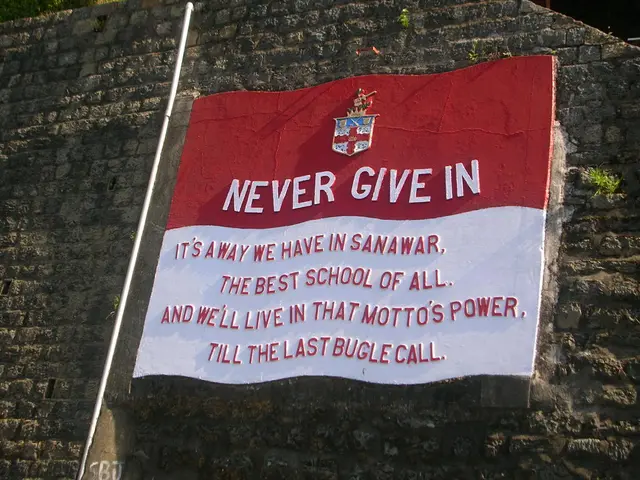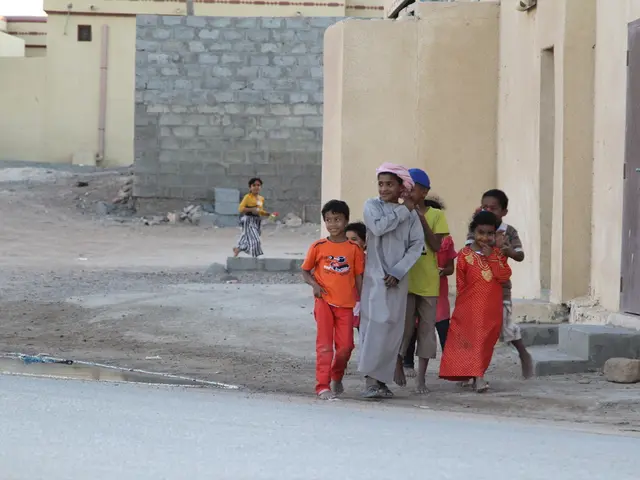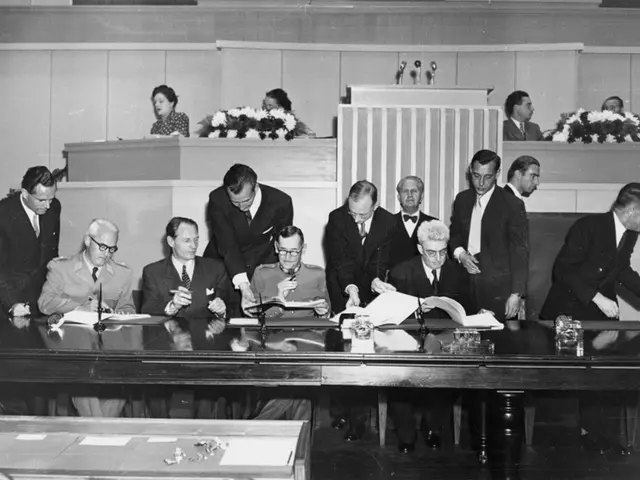The immense fatalities in the WWII conflict at Stalingrad: An examination
The Battle of Stalingrad, fought from August 1942 to February 1943, was a decisive moment in World War II that marked a significant turning point in the Eastern Front. This brutal urban combat, which involved close-quarters fighting with bayonets and hand grenades, halted the German advance into the Soviet Union and inflicted a devastating defeat on the German military [1][2][3].
The battle began with a massive German attack involving over 22 divisions and extensive air and tank support. The Soviet defenders, led by General Vasily Chuikov, were determined to hold the city at all costs. In a surprise pincer attack on November 19, 1942, Gen. Chuikov organised a strategic manoeuvre that encircled the German forces [1].
The German 6th Army, under the command of Friedrich Paulus, suffered about 300,000 killed or captured, while Soviet casualties exceeded 400,000. The Soviet counteroffensive, launched in November 1942, ultimately forced the surrender of the German forces in February 1943 [1][2].
The defeat at Stalingrad shattered the myth of German invincibility on the Eastern Front and boosted Soviet morale and international confidence in the Red Army. It also shifted the strategic initiative to the Soviets, who thereafter began a relentless push westward towards Germany [1][3][4].
For Germany, the loss at Stalingrad resulted in the permanent depletion of experienced troops and resources that the Nazis could not replace efficiently. It marked the end of German offensive operations in the East and the start of defensive retreats [1][2][5].
For the Soviet Union, the victory stabilized the Eastern Front, preserved its industrial heartland in the east, and significantly improved Stalin’s leverage among the Allies. The battle symbolized Soviet resilience and capacity to absorb and counter massive invasions, which was critical to the eventual defeat of Nazi Germany [1][4].
The Motherland Calls, a towering statue located on a hilltop in Volgograd, is a memorial to the 1.1 million Soviet soldiers and 40,000 civilians who were killed, injured, or captured during the defense of Stalingrad. The statue, which is the tallest in Europe and the tallest of a woman in the world, was constructed to commemorate the Battle of Stalingrad. The 200 steps that lead up from the base of the memorial complex represent the 200 days of the Battle of Stalingrad [6].
Adolf Hitler, who announced Operation Barbarossa, a massive German invasion of the Soviet Union, in December 1940, believed that the communist nation was populated by "subhuman" racial and ethnic groups like Jews and Slavs. However, the Battle of Stalingrad proved that the Soviet people were not so easily defeated [7].
The Battle for Stalingrad was a street-by-street, house-by-house fight, with nearly a quarter million German troops fully surrounded and choked off from their supply lines. Despite Hitler's plan to attack along three fronts simultaneously and resupply by airlifts, the airlifts were a disaster, and only 6,000 German prisoners ever made it back home [4].
The statue depicts a woman with a sword aloft, looking back over her shoulder to rally her people. This powerful image serves as a testament to the resilience and determination of the Soviet people during the Battle of Stalingrad, a battle that would ultimately change the course of World War II.
[1] Tucker, Robert C. (2015). "Stalingrad: The Fateful Siege: 1942-1943". Yale University Press. [2] Erickson, John (1975). "The Road to Stalingrad: Stalin's War with Germany". Pantheon Books. [3] Glantz, David M. (2009). "Colossus Reborn: The Revival and Decline of the Red Army 1941-1943". University Press of Kansas. [4] Erickson, John (1983). "The Road to Berlin: Stalin's War with Germany". Pantheon Books. [5] Glantz, David M. (2005). "When Titans Clashed: How the Red Army Stopped Hitler". University Press of Kansas. [6] "Motherland Calls". Volgograd City. Retrieved 2021, March 5. https://volgograd-city.ru/en/sights/monuments/motherland-calls/ [7] Wheatcroft, Andrew (2017). "The Life and Death of Stalin". Basic Books.
- The Battle of Stalingrad, a significant event in World War II history, showcased the Soviet Union's environmental resilience and general news-worthy capacity to absorb and counter massive invasions.
- The space of politics during World War II was redefined by the Battle of Stalingrad, as it shattered the myth of German invincibility, boosted Soviet morale, and significantly improved Stalin’s leverage among the Allies.
- The environment of Volgograd, Russia, bears witness to the tragedy and triumph of the Battle of Stalingrad, through the towering statue 'Motherland Calls', a symbol of the city's war-and-conflicts past and memorial to its fallen soldiers.








